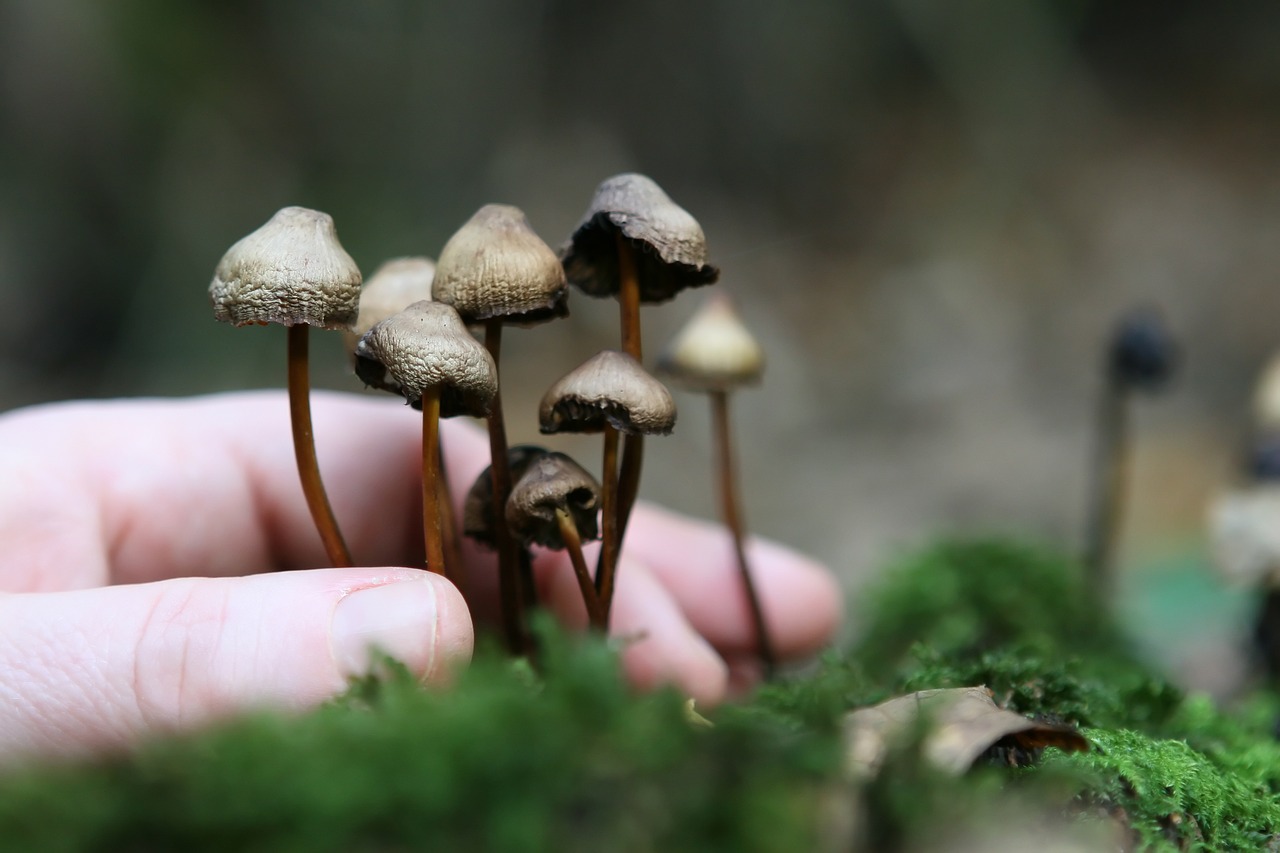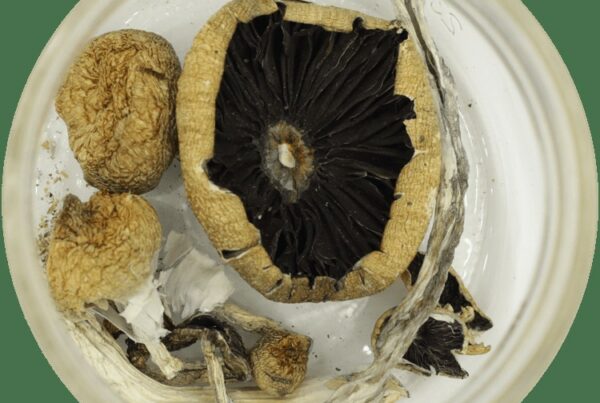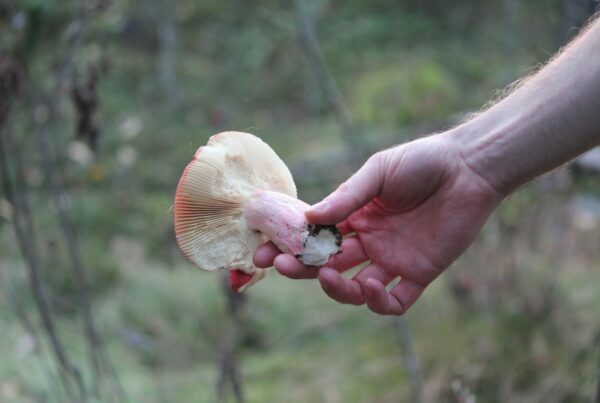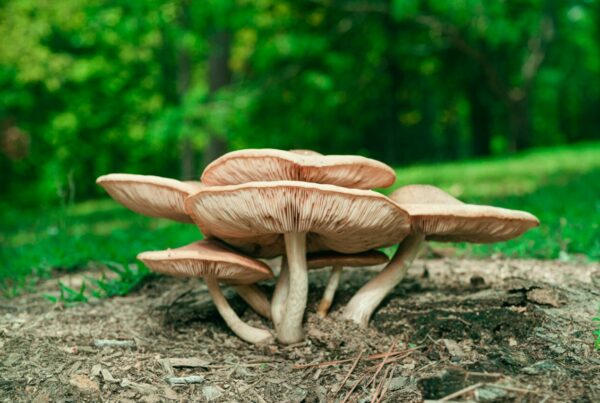Demystifying Mycelium
Mycelium, the foundational structure of fungi, acts much like the digestive system for mushrooms. It seeks, processes, and transforms nutrients into an absorbable form for the fungus, effectively nourishing it. The byproduct of this process enriches the soil around it, supplying essential nutrients for other organisms and creating a nutrient-rich biomass ideal for gardening uses.
Beyond their function in mushroom growth, mycelium networks are crucial for the wellbeing and development of numerous terrestrial plants, including trees. For example, tree roots form a symbiotic relationship with fungi where the tree provides sugars as a carbon source for the fungus, and in return, the fungus grants the tree vital minerals like nitrogen and phosphorus. Learn more about this mutualistic exchange here.
Fascinatingly, mycelium networks act as an underground botanical communication system, mirroring the neural networks in our brains. Emerging scientific research suggests that plants and trees may have basic nervous systems that fungi could potentially manipulate, impacting functions such as communication, memory, and learning. Moreover, mycelium aids in maintaining soil health by decomposing organic waste and neutralizing any pollutants present.
If cultivating magic mushrooms piques your interest, a fundamental understanding of mycelium development is crucial. While the cultivation process may seem daunting for novices, learning about mycelium is an important initial stride. While purchasing mushrooms from Deadhead Chemist Canada online is always viable, gaining knowledge about mycelium can enrich your cultivation journey.
Understanding the Growth Cycle of Mycelium
When fungal spores find a growth-friendly environment, they kick-start the formation of two kinds of mycelium. The first kind, termed primary or monokaryotic mycelium, features a single nucleus in every cell and is typically invisible to the naked eye. The second kind, referred to as secondary or dikaryotic mycelium, is visible and houses two nuclei in each cell.
When fungal spores germinate, they give rise to what is known as the monokaryotic mycelium, or primary mycelium. If this primary mycelium comes into contact with another compatible monokaryotic mycelium, they can combine to create a secondary stage, referred to as the dikaryotic mycelium. This secondary mycelium is what is responsible for producing mushrooms or sclerotia.
Mycelium Classifications
There are three distinct types of mycelia, two of which are indicative of successful mushroom cultivation.
- Rhizomorphic mycelia are characterized by their string-like extensions. Composed of units referred to as hyphae, the rhizomorphs represent the network of grouped hyphae. Rhizomorphic mycelia first expand, then send chemical signals back to the colony, indicating that the area ahead is suitable for nutrient delivery. The remaining mycelia then follow suit. The hyphae at the tip of the rhizomorphic mycelia secrete peroxidase, a substance that breaks down the material in front for sustenance. Then, the hyphae spread over the material, sharing the nutrients with the rest of the colony. This type of mycelia is preferred by many cultivators due to its higher probability of mushroom production as the Rhizomorphic mycelia sprout from the substrate.
- Tomentose or “Fluffy” mycelia are quite similar to Rhizomorphic mycelia, but their arrangement of fluffy mycelia strands is distinct. These strands may not be readily visible but are certainly there. Their cotton-ball-like look suggests that the strands are grouped together. The development of your mycelia into either tomentose or rhizomorphic traits is largely dependent on the growth environment. Cultivators are still debating whether the type of mycelia has any impact on the growth rate or the yield.
- Aerial mycelia develop when the conditions for growth are not ideal. In these circumstances, the mycelia tend to grow outward rather than spreading across the medium or forming a cluster. Often mistaken for a bacterial infection, this type of mycelia can impede your mushroom cultivation, resulting in weaker, smaller mushrooms. Aerial mycelia typically occur due to a lack of fresh air exchange and high humidity.
Is it Mould or Mycelium?
It’s vital to distinguish between mould and mycelium. If green, blue, grey, or black patches appear on or in your fruiting box, it’s likely that your culture is contaminated. Discolouration serves as the main indicator. However, keep in mind that blue spots could merely be bruises.
Cobweb moulds are typically quite noticeable. Unlike the bright The Mycelium is typically characterized by its greyish-white color and a fluffy, string-like texture. Although cobweb and green molds do not pose a threat to human health, they can adversely impact the health of your mushrooms.
Deadhead Chemist Canada: Your Reliable Source for Mushroom-related Information
Whenever you think about psychedelic mushrooms in Canada, remember Deadhead Chemist Canada. We are committed to delivering insightful information to ensure your mushroom experience is both safe and enjoyable.





